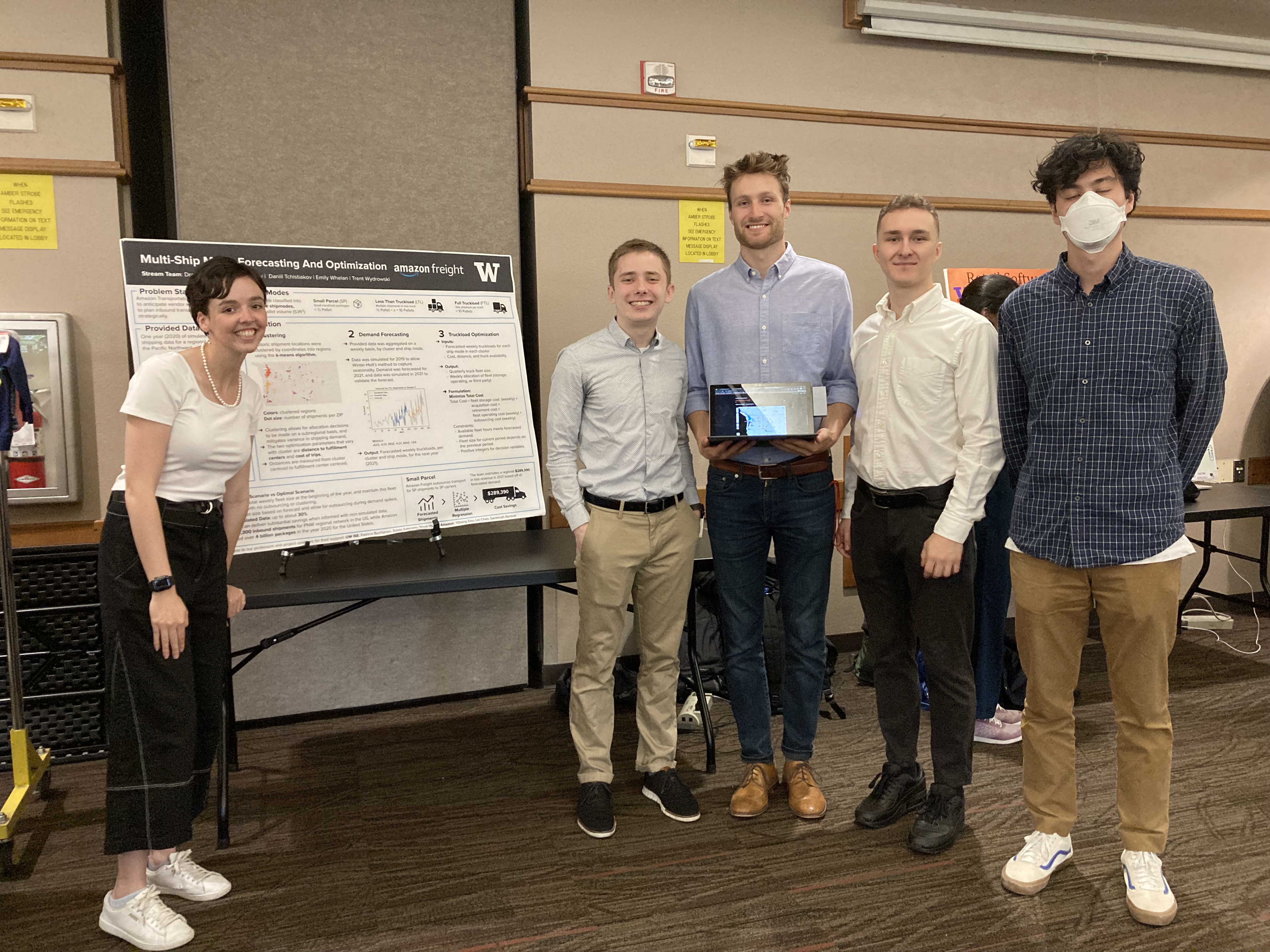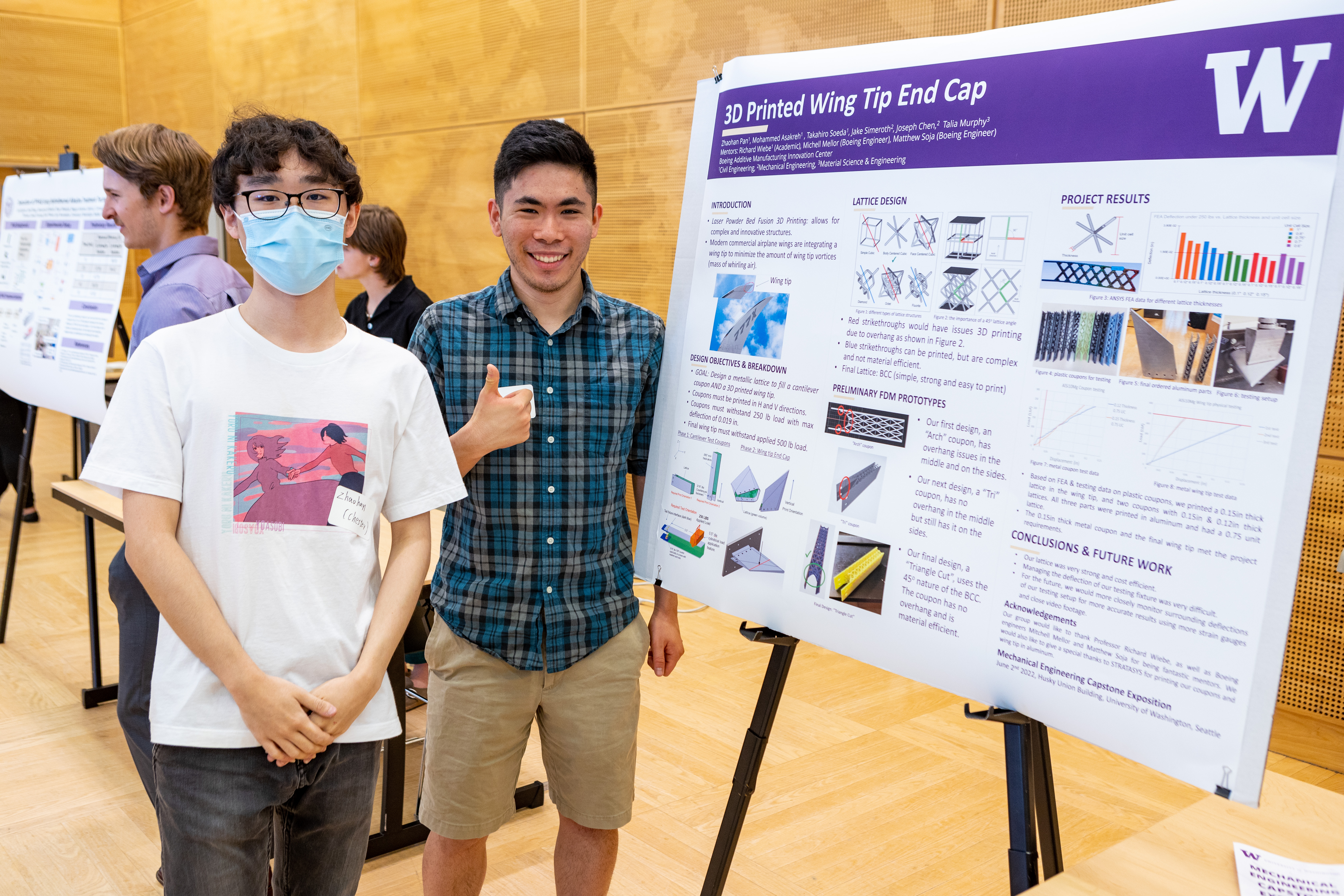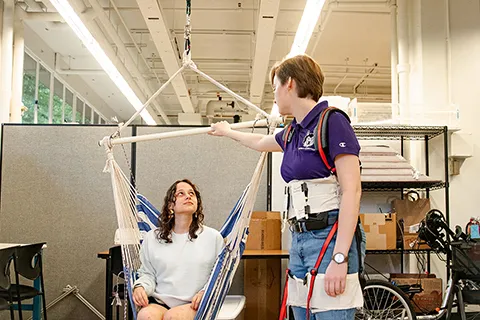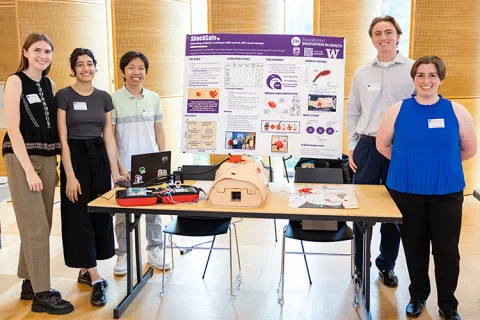Industry-Sponsored Student Capstone Projects
2021/2022
In the 2021/22 academic year the industry capstone program was supported by 62 sponsors and 95 real-world projects. Over four hundred students from across the College of Engineering participated. Scroll down to learn more about each project.
Amazon
Multi-Ship Mode Forecasting and Optimization
The student team worked to solve a regional transportation capacity planning problem. The modern fast shipping and supply chain framework has resulted in constant variation in shipping demands. Both short-term and long-term capacity planning require forecasting and optimization solutions. The student team created a tool that can take historical shipper demands as input and generate short term (4-weeks) and long-term (12-months) shipping volume forecast for Full Truckload (FTL), Less-Than-Truckload (LTL) or Small Parcel (SP) carriers. The output of the tool includes intuitive visuals that work for both operators and management teams.

Boeing
3D Printed Wing Tip End Cap
Modern commercial aircraft wings often include winglets or rake tips to minimize wingtip vortices that cause drag. These tip designs have become very intricate and complex in order to achieve the maximum efficiency. These designs, in many cases, must be fabricated out of solid metal in order to achieve the required shape and stiffness with the limitations of traditional machining processes. This student team worked to design (with optimization for weight reduction and stiffness), print, and test a sub-scale lattice reinforced hollow wing tip end cap to replace a traditional machined wing tip, and provided Boeing with an evaluation of tier findings and recommendation for suitable lattice structure designs.
City of Fife
Fife City Hall and Vertical Evacuation Structure and Evacuation Planning
This student team worked on programming and preliminary design of a new City Hall and sitework, to include a vertical evacuation structure for potential lahar and tsunami events. The City of Fife lies in the Puyallup River valley and has, over geological time, been subject to both lahar and tsunami events. Seismologists state that such events could occur again, including some risk that a major earthquake in the Cascadia Subduction Zone could trigger both a tsunami and a lahar. In such a case, the tsunami might hit Fife ten to fifteen minutes after the earthquake and the lahar less than an hour after that. Despite this risk, the City's proximity to the Port of Tacoma and Interstate 5 has led to substantial development of the city, which now hosts over 20,000 employees and 10,360 residents. The team prepared conceptual plans and documents for a new building or buildings to house City Hall, police, and court functions, as well as to serve as a vertical evacuation structure that will protect occupants in the event of a lahar.
Related News

Fri, 09/20/2024 | UW Civil & Environmental Engineering
Smarter irrigation for a greener UW
A new project combines satellite data with ground sensors to conserve water and create a more sustainable campus environment.

Mon, 09/09/2024 | UW Mechanical Engineering
Testing an in-home mobility system
Through innovative capstone projects, engineering students worked with community members on an adaptable mobility system.

Mon, 08/19/2024 | UW Mechanical Engineering
Students strive to ensure accurate AED shock dosage
ShockSafe, developed by students with the help of mentors from Philips and Engineering Innovation in Health (EIH), can distinguish between children and adults during cardiac arrest emergencies.

Wed, 08/07/2024 | Snohomish County News
Snohomish County, University of Washington partnership boosts efficiency in enterprise scanning center
UW Industrial and Systems Engineering Capstone Project set to save Snohomish County over $40,000 annually.